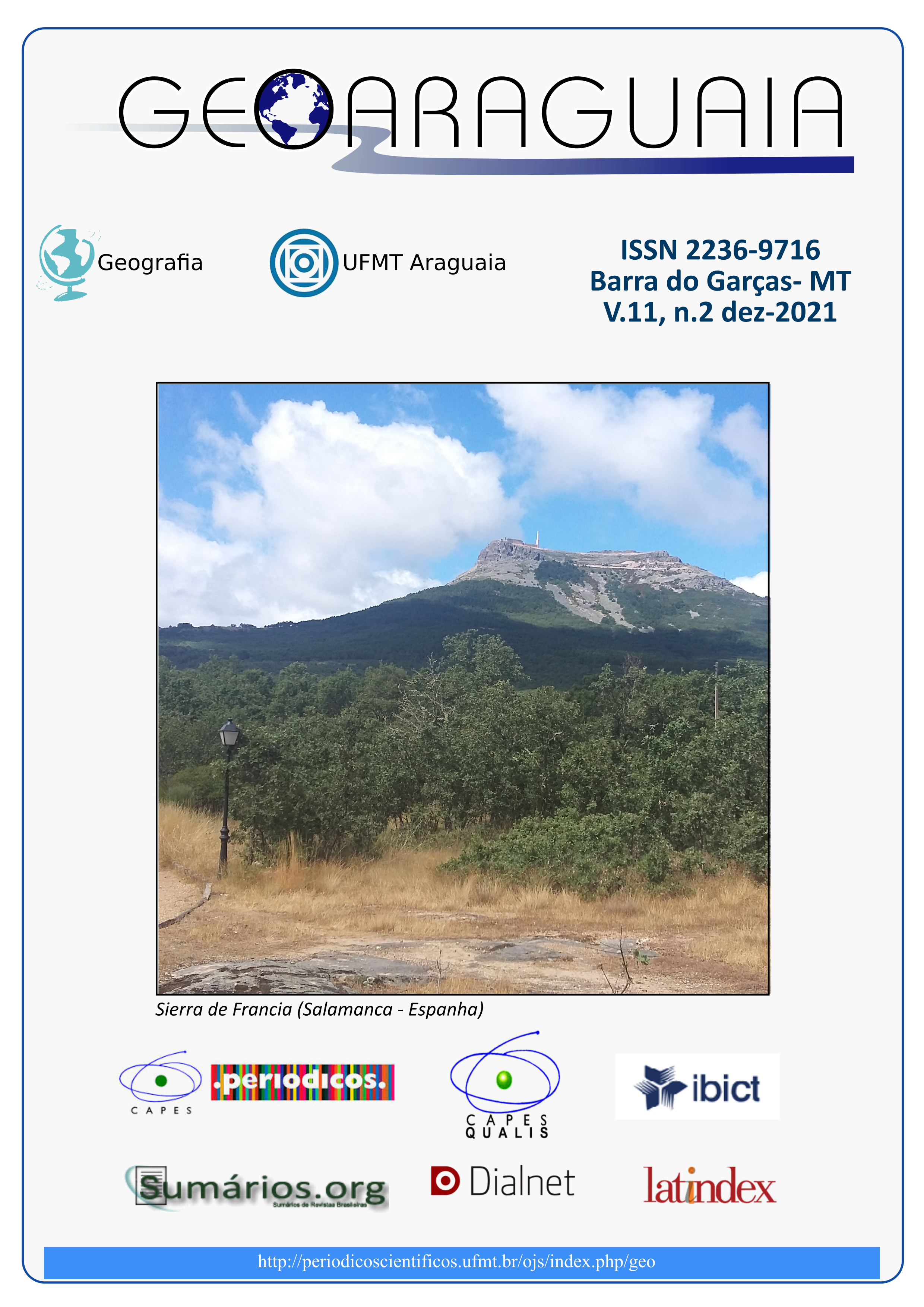Investigation of Erodibility and Sedimentation in Goyjah Bel basin
Palavras-chave:
basin, Erosion, Weathering, Sedimentation, PSIAC, MPSIACResumo
Goyjah Bel basin is located 10 km south of Ahar city with an area of about 7462.8 hectares, where the occurrence of erosion is remarkable. This study is based on library studies, field studies, and the use of empirical models of erosion and sedimentation estimation. For estimation of the intensity of erosion in these units, and classification of lands based on quantitative criteria, PSIAC method is used with a comprehensive view of all the determinants. Estimation of erosion by this method in geomorphological units proves that the hypotheses on speed and accuracy, identification of the most important erosion factors and the most critical areas of sedimentation, and determination of relations and distribution of erosion in the region is correct. Here, the experimental MPSIAC model, which considers the most effective parameters in erosion and sedimentation, is used, and environmental parameters are evaluated. Finally, the results are compared with neuro-fuzzy model. The results indicate that MPSIAC model works good in this basin. It should be noted that the estimated sediment is in erosion class of 4, and in terms of qualitative classification, the erosion was in a high class. Therefore, according to the definition of this class, it can be said that in this basin, the transfer of soil particles is to an extent that implementation of soil and water conservation programs is necessary and prior, and the use of land must be so limited
Referências
Aghanabati, A.; Geology of Iran. Ministry of Industry and Mines, Geological Survey of Iran, 2004. pp. 582 .
Ahmadi, H.; Feiznia, S.; Quaternary Formations (Theoretical and applied), University of Tehran Publication, 1999. pp. 557.
Bakhtiari, S.; Roads Atlas of Iran, Gitashenasi, Geographical and Cartographic Institute, 2011. pp.320.
Baratian, M.; Arian, M.A.; Yazdi, A.; Petrology and Petrogenesis of Siah Kooh Volcanic Rocks in the Eastern Alborz. Geosaberes 11, 2020. p. 349-363.
Bennett, L.; Layard, A.; Legal Geography: Becoming Spatial Detectives, Geography Compass, 2015. pp. 406- 422.
Faiznia, S.; Applied Sedimentology with Emphasis on soil Erosion and Sediment production. Agricultural and Natural Resources University of Gorgan Press, Iran, In Persian, 2008. pp.356.
Faiznia, S.; Resistance of stone to erosion in different climates of Iran. Journal of Natural Resources. Iran. 47, 1995. pp. 95 - 116.
Gooldman, C.R.; Primary productivity and micron - trient limiting factors in some North American and New Zealand lakes. Int. Ver. Theor. Angew. Limnol. Verb. 15, 1964. pp.365-374.
Motamed, A.; Sedimentology, Tehran University, 2003. pp.376.
Nabavi M.H.; The history of the Geological Survey of Iran, Geological Survey of Iran, 1976. pp.109.
Poorbehzadi, K.; Yazdi, A.; Sharifi Teshnizi, E.; Dabiri, R.; Investigating of Geotechnical Parameters of Alluvial Foundation in Zaram-Rud Dam Site, North Iran. International Journal of Mining Engineering and Technology 1(1), 2019. p.33-34.
Refahi, H.; Water erosion and its control, Tehran University Press and Publishing House, 2003. pp. 671.
Stocklin, G.; Structural History and Tectonic of Iran: A Review. American Association of Petroleum Geologists Bulletin, 52, 1968. pp. 1229-1258.
Yazdi, A.; ShahHoseini, E.; Razavi, R.; AMS, A method for determining magma flow in Dykes (Case study: Andesite Dyke). Research Journal of Applied Sciences, 11(3), 2016. p.62-67.
Yazdi, A.; Shahhosini, E.; Dabiri, R.; Abedzadeh, H.; Magmatic differentiation evidences and source characteristics using mineral chemistry in the Torud intrusion (Northern Iran). Revista Geoaraguaia, 9(2), 2019. p.1-21
Yazdi, A.; sharifi teshnizi, E.; Effects of contamination with gasoline on engineering properties of fine-grained silty soils with an emphasis on the duration of exposure, Springer, SN Applied Sciences 3, 2021. 704. DOI: https://doi.org/10.1007/s42452-021-04637-x
Downloads
Publicado
Edição
Seção
Como Citar
Licença
A Revista Geoaraguaia poderá solicitar alterações de ordem normativa, ortográfica e gramatical, com vistas a manter o padrão culto da língua. Se necessário, alguns ajustes normativos podem ser feitos pela revista, porém respeitando o estilo dos autores.
As provas finais não serão enviadas aos autores.
As opiniões emitidas pelos autores dos artigos são de sua exclusiva responsabilidade.





 A revista
A revista